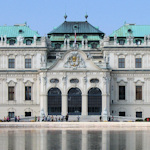
The Belvedere area with its upper and lower palaces counts as a hotspot among Vienna’s recommended sightseeing areas. But what should you focus on among all that art, horticulture, and history? Here my suggestions…
- Book tickets & tours* for Belvedere
- See also:
At Upper Belvedere
1. Don’t miss the Kiss!
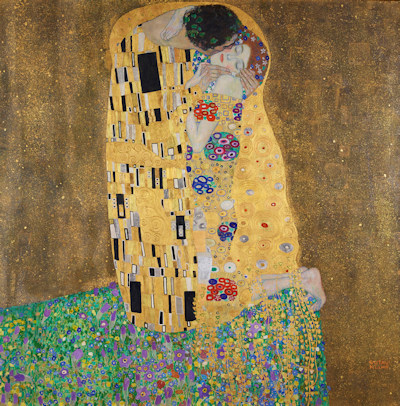
(Photo courtesy of and © Belvedere, Wien. Reproduced with permission under the terms of Creative Commons License CC BY-SA 4.0.)
OK, let’s get this one out of the way.
Would you visit the Louvre and ignore the Mona Lisa? Unlikely. So don’t miss The Kiss by Gustav Klimt at Belvedere.
This truly world-famous and iconic painting hangs without fuss on one wall in the permanent exhibition area at Upper Belvedere.
You might find one or two other people taking a look with you, given The Kiss ranks as Vienna’s most important artwork (it often appears near the top of global rankings, too).
2. Find the character heads

(Character head by Franz Xaver Messerschmidt. Photo courtesy of and © Belvedere, Wien. Reproduced with permission under the terms of Creative Commons License CC BY-SA 4.0.)
A lot of Belvedere’s art makes a lasting impression. None, perhaps, more so than the busts by Franz Xaver Messerschmidt: a series of studies of weird and wonderful expressions that often seem strangely avant garde.
Created (perhaps surprisingly) as long ago as the 18th century, Messerschmidt’s creations would fit nicely in London’s Tate Modern or New York’s MoMA.
Belvedere owns sixteen of the character head busts, though not all may be viewable at any one time. On my last visit in late 2023, ten of them formed their own display area on the first floor of Upper Belvedere (in the Baroque section of the permanent exhibition).
3. See Napoleon
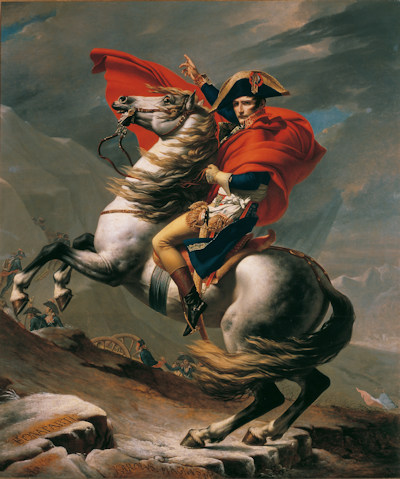
(Photo courtesy of and © Belvedere, Wien. Reproduced with permission under the terms of Creative Commons License CC BY-SA 4.0.)
The most famous image of Napoleon Bonaparte has the Emperor astride a rearing horse as he crosses the Alps, bicorne hat firmly in place, arm stretched out in authority hoping nobody notices the entirely unsuitable winter clothing.
Jacques Louis David painted several such portraits. One normally hangs on the first floor in Upper Belvedere.
The Kiss gets the glory, but take time to view all the permanent displays at this upper palace.
That innocent little piece of art sitting in one corner might be a Munch. Or a Schiele. Or a Rodin. To name but three of the world-famous artists featured there.
Incidentally, while the upper palace grabs all the art plaudits, do check for special art exhibitions at Lower Belvedere, too. They’re often rather good.
4. Slip behind Belvedere lake

(The view during the Christmas season)
Most people focus on the Upper Belvedere interiors and art, along with the gardens leading down to Lower Belvedere palace.
But go around to the front of Upper Belvedere (the opposite side to the public entrance). Then walk out beyond the small lake and look back.
This view makes an excellent photo of the palace. Ideally, wait until twilight to get the building all lit up with a background of nighttime blue.
If you can, go when the Belvedere Christmas market opens. The view across to the market and palace at dusk looks like something from a fairytale. I’m not kidding. I even put the photo opportunity at the top of my list of things to do at Christmas when in Vienna.
Belvedere in general
5. Look up (and down)
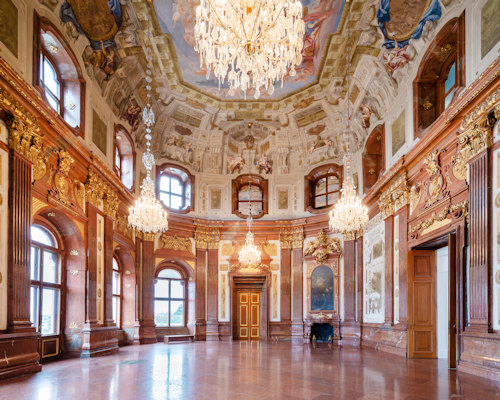
(Upper Belvedere interior: the marble hall © Lukas Schaller / Belvedere, Wien)
The art takes all the attention, but both palaces boast impressive architecture.
Many of the rooms within both Belvedere palaces have been refurbished as modern museum galleries. Some rooms, however, remain pretty much as they were. You’ll spot these from the innumerable frescoes, reliefs, statues, paintings and other such designs venerating the life of the not-so-modest Prince Eugene.
Be sure to look up even when in the modern galleries, because the ceilings often retain their original state.
Upper Belvedere’s interior also includes the gorgeous Marble Room on the first floor. So gorgeous, they used the location for the signing of the post-WWII Austrian Independence Treaty in 1955.
Pop up to the second floor for views down into that same room, allowing you a different perspective on the illusionist paintings and marbled delights.
6. Go back in time

(The dome is from a neighbouring church)
A ticket to the Lower Belvedere palace also allows you into the privy garden, a nice little Baroque garden that provides some respite from any crowds and often features landscaped spring and summer blooms.
Walk to the very back and then look around you; not a sign of anything modern in sight. Well, you might spot the occasional 20th-century roof (or construction crane) but careful positioning and use of hedge cover should keep it historical.
The view transports you to the time of Prince Eugene (albeit without the humongous wigs and poor sanitation).
You get a similar effect by looking out the windows of the Belvedere Orangerie, if you stand in the right place in the windowed corridor.
7. Walk to the city centre
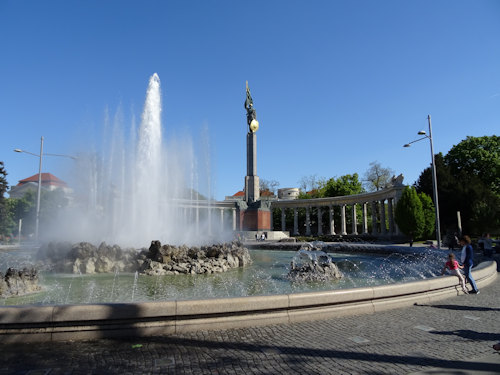
(The fountain and monument)
When you’re done with Belvedere, walk down to the lower palace and return to the city centre on foot.
This route takes you across Schwarzenbergplatz with its huge Red Army monument, the giant Hochstrahlbrunnen fountain, and the statue of Prince Schwarzenberg, which are all otherwise slightly off the usual tourist walking routes.
Do this at the end of the day in summer and the fountain lights up in different colours.
And, after all that, it’s time to reward yourself with coffee and cake. The nearby Café Schwarzenberg, for example, is one of Vienna’s more traditional coffee houses.